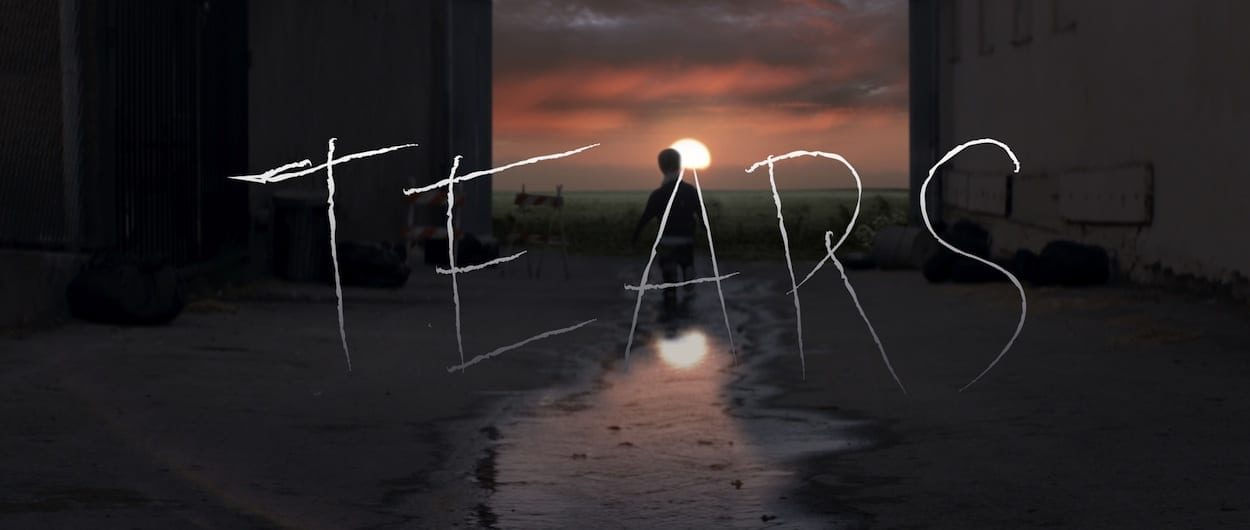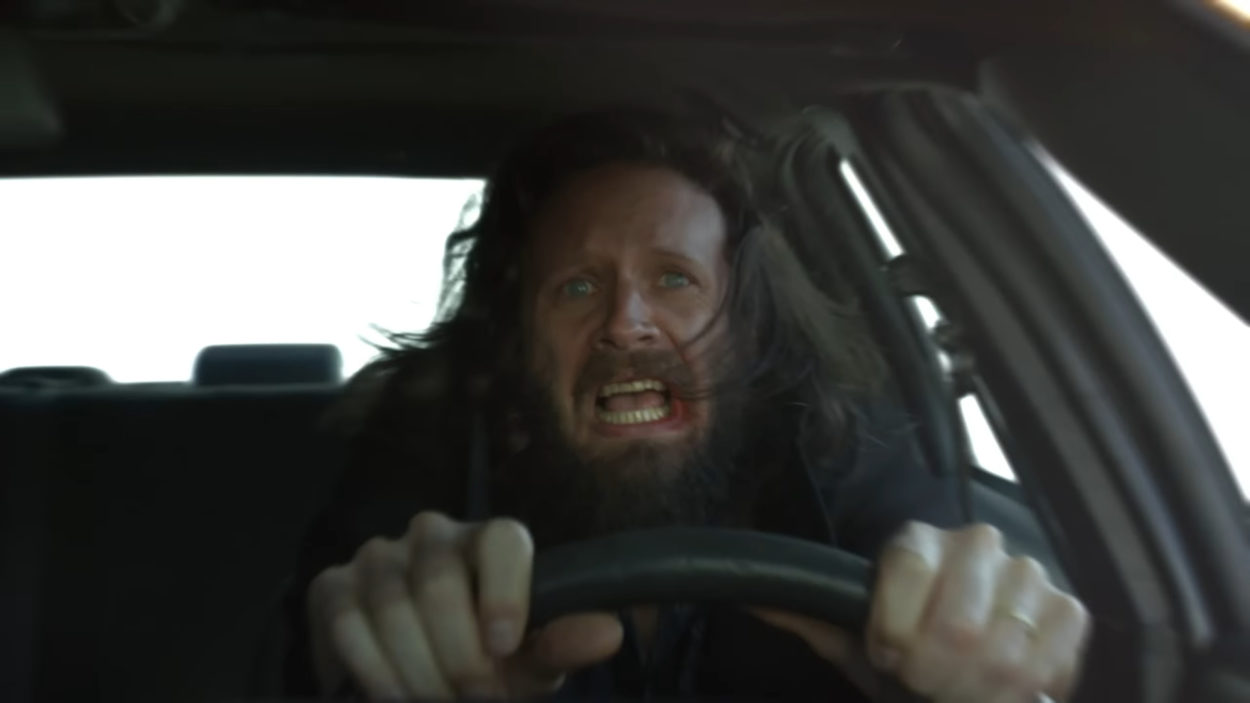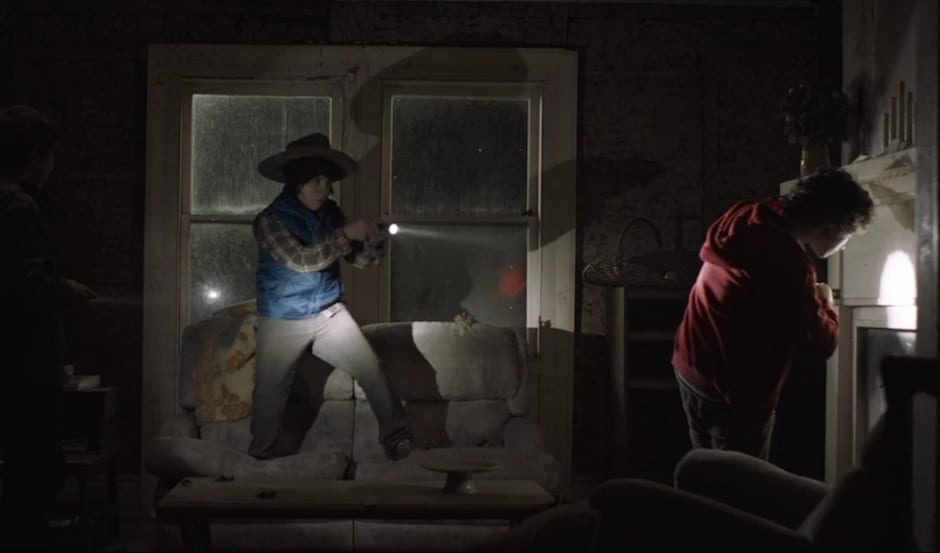How did the concept for the film evolve? And how would you describe the heart of it? They’re not quite zombies but more than just homeless…
This was the third idea I pitched to the band. I was told to go down the darkest path imaginable. They loved my first idea, but I couldn’t follow through with it. It was too dark. The second idea was a watered down version of the first and the band saw right through it.
Then we put the words “Baby” and “Zombie” together. Jeff and I looked at each other and knew we had the start of something. The band was intrigued but very hesitant. It’s a concept that could go so many different directions. Jake (the singer of HEALTH) told me that it was because of the first treatment they were even considering this new direction at all.
Needless to say, that’s the path we went down. What I took from it: these are little people, but they are experiencing the world so much harder than everyone else. Pacified one moment, releasing harrowing screams the next. It was the contrast of emotions that we found so initially intriguing. What might it feel like to have such conviction?
The idea evolved throughout every state of production. At some point, I believe the concept moved beyond “Baby Zombies” to become an allegory for the developing mind.
It’s an obvious ask but were you worried that there would be a negative reaction to using babies given the subject matter? And why did you want to shoot babies in this way?
Ask anyone on the production and they will tell you about my neurosis on this project. I was very concerned about how it would be received in the public sphere, and any accusations that could be made towards us. Some people (mostly people on youtube) will always misinterpret intent, or fixate on very specific portions without considering the bigger picture. Knowing that allowed me to weigh each decision very carefully.
Jeff and I wracked our brains on what methods could be employed to “trick” the viewer into thinking these babies were truly in danger. The result can be attributed to the style of shooting (slow motion), the makeup and vfx (half and half), the production design (most props are miniaturized), careful casting, the restraint of the edit, and – most importantly – creating a tone that felt appropriate for the song. It’s such a simultaneously profound and unnerving track. It’s my favorite I’ve been sent yet.
The band kept saying “we don’t want this to be cute” and that “it needs to have teeth”. The word “gnarly” was dropped at least once per conversation. Looking back, it was precisely the tone the piece required. But there were many things the band suggested that I didn’t include because they were just too intense. It was always important for me to find a balance.
I expected the reaction upon release to be more polarizing and controversial. To best honest, it hasn’t been seen by that many people yet. The magic of the internet could allow this project to find its proper audience down the line.
There’s something intrinsically harrowing about the idea of abandoned children. But I guess the bigger theme is the general inevitability of children leaving parents, that weird paradox of parental love that necessarily ends up with the parent letting go of the child (reading in to the lyrics).
The subject matter is fragile. I’ve just begun to understand the power of paternal instinct (not by having kids, but knowing those who do). To care for the wellbeing of another human so strongly that it trumps everything else in your life. Knowing that, we are tapping into a primal fear here. Parents are conditioned to respond to the cries of a child immediately. When watching this, the primal urge has no release. You are forced to either uncomfortably watch what appears to be a child in distress, or turn it off. If you stick it out, and in some way disconnect, I believe the stage is set for you to experience something extremely visceral.
And how did you go about casting? Did you find that a lot of the parents were HEALTH fans?!
We auditioned at least 70 babies. Sometimes two at a time. That was a really weird day.
They were at every end of the spectrum in terms of their development. Some engaged the camera while others wouldn’t come out from behind their parent’s legs. They stared at us with looks of confusion. None of them were old enough to understand what was happening.
I left that casting session well versed in the nuances of one to two year olds. In that important time, you learn to walk and speak. Things immediately change once those things occur. In the short limbo between – like when they can stand up but fall immediately – you can see the desperation in their faces. It’s like someone struggling to be more than their body allows.
This further cemented that the subject matter was rich and worth exploring further. None of the parents knew HEALTH I don’t think. Though nine pairs of them sure do now. The parents’ reactions to the final piece has been great. Though we haven’t heard back from one…
Whereabouts did you shoot? There’s a great Walking Dead post-apocalypse vibe to the shots.
We shot the warehouse district near downtown for the establishing shots. The rest was shot in an alley behind a studio. There are a few shots that were shot on green screen. Lots of background replacement throughout. Jeff is a wizard with VFX.
For me, it was about creating a landscape that could represent the mind. The open field of potential. The traps and cages of thought. A stream of consciousness (blood). The ambiguity of space…
It’s crazy how diverse the Zombie genre has become. I’d venture to say it’s entirely played out. I don’t think either of us ever wanted to really play too much into the trope. Rather, we wanted to use the perceptions that existed in the collective unconscious to tell a more complex story.
Was it quite a difficult shoot given the complications of working with children?
We shot everything with the children in one 12-hour day. We slept for a few hours and shot the establishing shots the next morning at dawn.
You can only shoot two-year-olds for 2 hours within a 4-hour window. That includes all the time spent in makeup. We had a baby wrangler and set teacher to make sure we stuck to that. In fact, we went out of our way to make sure they were strict with us. We wanted to do everything properly.
When it came to how we shot the babies, you simply could not direct them. We set up “playgrounds” for the kids and filmed what transpired. The most you could do was place the mother off camera and hope for an eye-line, or start them at point A and put a toy at point B. That said, there was something extremely volatile about this kind of set up. It was equally about discovery as it was about execution.
We never forced children to cry. Babies cry a certain percentage of the time. We just happened to have the camera ready to stretch those five desperate seconds into 10 on screen.
It proved useful for the leads to be twins, because we could switch off between them. But we really wanted them to interact with each other as well, so there was a slight overlap. Twins establish such a unique dynamic extremely early on – a secret language perhaps?
What was the most enjoyable part of the process for you?
Cutting the whole thing together with Luke Lynch. He’s the reason I got the job and great at what he does.
Anything else in the pipeline?
I’m developing some projects right now, some in conjunction with Vice. They should go into production early next year. The plan for one project is to create a universe of characters, and then open it up to collaborations with other directors. I love seeing directors come together to create different installments of a series. There’s always room to carve out something unique in the approach and distribution too. Kind of like what AG Rojas and Vince Haycock are doing with Mainline. I also plan to further my “Longingness” series for Hammock. And I’ve still got that feature in the works in case any potential investors are reading this.

















